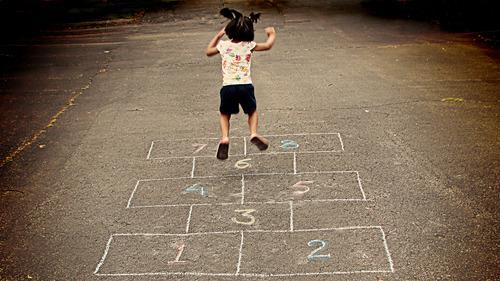by Sasha Brown-Worsham
 Puzzles,
blocks, board games, and pick-up sticks might seem to have gone the way
of penny candy and being allowed to walk home from school alone at 8
years old when it comes to today’s kids. But these “old-fashioned” games
do something for children that Minecraft,iPads, and the Wii never will.
They offer children “spatial orientation” — a better sense of how to
manipulate and exist in the world around them.
Puzzles,
blocks, board games, and pick-up sticks might seem to have gone the way
of penny candy and being allowed to walk home from school alone at 8
years old when it comes to today’s kids. But these “old-fashioned” games
do something for children that Minecraft,iPads, and the Wii never will.
They offer children “spatial orientation” — a better sense of how to
manipulate and exist in the world around them.
"Spatial
orientation" has grown-up application in everything from engineering to
whether or not a person can read a map. Or whether they can put
together furniture from Ikea. Or drive in heavy traffic. In other words,
it’s vital and eventually develops into STEM (Science, Math,
Engineering, and Technology) skills.
“Spatial
orientation is all about how people think about space,” says
psychological scientist and researcher Jamie Jirout of Rhodes College
whose study on children at play was recently published in Psychological Science. “It’s about how different objects fit in space and imagining how objects look from different angles.”
Jirout’s
study found that children who play with blocks, puzzles, and board
games — “simple” toys by any definition — are far more likely to build
these spatial reasoning skills than children who play with other toys.
“Providing children with access to spatial play experiences is a good
way to boost spatial development,” she says.
So what are the top five simple games that help build this sense of space?
Battleship:
In Battleship, “you are thinking about space,” Jirout says. “You need
to figure out which direction their ship is in and how you can use
effective questioning to get there.” It’s not a game one might
immediately jump to when you think of STEM skills, but those are
precisely the skills it builds.
Hopscotch:
Although, not in the category of blocks, board games, and puzzles, this
very physical game also involves numbers and spatial orientation, says
Geralyn Bywater McLaughlin, Director of Defending the Early Years, an
organization dedicated to helping educators fight testing and all the
things that take away from the way children truly learn. “Children
practice large and small motor skills and spatial relationships as they
draw the game with chalk, McLaughlin says. “And then toss their pebbles
and jump along the numbered spaces. There is so much to figure out and
do.”
Chutes and Ladders: Many
parents probably have fond memories of this game and of rolling the
dice and climbing to the top only to shoot back down the slide. But this
game is more than just luck and chance and fun. “The board itself is
made up of a grid,” Jirout says. There is a counting, math component to
it all, but also a strong sense of spatial orientation. Where is my
opponent compared to me? How can I catch him? What number do I need to
get to get there?
Jenga:
There was no game more exciting — or more simple — than Jenga. Simply
pull a block from the tower and hope and pray it doesn’t fall. But there
is so much more to it, says McLaughlin. “Children develop eye-hand
coordination and experiment with gravity as well as cause and effect,”
she says. “They will learn that the blocks are more stable on some
surfaces than others. The sounds that travel from the falling blocks
will very depending on how high the tower gets, and the surface they are
playing on.”

No comments:
Post a Comment